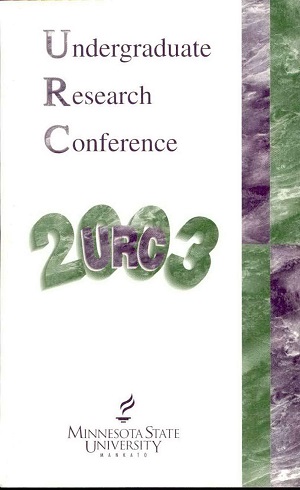Mythic Rhetoric and the Construction of Paul Wellstone as Sacred Symbol
Location
CSU
Student's Major
Communication Studies
Student's College
Social and Behavioral Sciences
Mentor's Name
Lisa Perry
Mentor's Department
Communication Studies
Mentor's College
Arts and Humanities
Description
On October 25,2002 Minnesota Senator Paul Wellstone died in a plane crash alongside his wife, daughter, three campaign workers, and two pilots. A week later, a nationally televised memorial was held to remember the late Senator. The passionate given by Wellstone friends and family caused some to question whether the event was truly a memorial. In fact, the Associated Press on October 30, 2002 reported the memorial transformed from "tears to foot stomping, cheers, and even booing people from other parties." Senator Tom Harkin (D-IA) exemplifies the tone of the memorial service when he states "Paul Wellstone's voice is tragically silenced, but his courage, energy, and daring carries on, compelling us to stand strong for what is right, good, decent, and humane, regardless of consequences." The construction of Paul Wellstone as a mythic figure began in full-force at the Memorial; thus this event bears closer examination. This paper will use Fulmer's article "Southem Clerics and the Passing of Lee: Mythic Rhetoric and the Construction of a Sacred Symbol" published in the Summer 1990 Southern Communication Journal to analyze the impact of the Wellstone Memorial service and answer the question, "How was mythic rhetoric used to construct Paul Wellstone as a sacred symbol for the Democratic party?"
Mythic Rhetoric and the Construction of Paul Wellstone as Sacred Symbol
CSU
On October 25,2002 Minnesota Senator Paul Wellstone died in a plane crash alongside his wife, daughter, three campaign workers, and two pilots. A week later, a nationally televised memorial was held to remember the late Senator. The passionate given by Wellstone friends and family caused some to question whether the event was truly a memorial. In fact, the Associated Press on October 30, 2002 reported the memorial transformed from "tears to foot stomping, cheers, and even booing people from other parties." Senator Tom Harkin (D-IA) exemplifies the tone of the memorial service when he states "Paul Wellstone's voice is tragically silenced, but his courage, energy, and daring carries on, compelling us to stand strong for what is right, good, decent, and humane, regardless of consequences." The construction of Paul Wellstone as a mythic figure began in full-force at the Memorial; thus this event bears closer examination. This paper will use Fulmer's article "Southem Clerics and the Passing of Lee: Mythic Rhetoric and the Construction of a Sacred Symbol" published in the Summer 1990 Southern Communication Journal to analyze the impact of the Wellstone Memorial service and answer the question, "How was mythic rhetoric used to construct Paul Wellstone as a sacred symbol for the Democratic party?"



